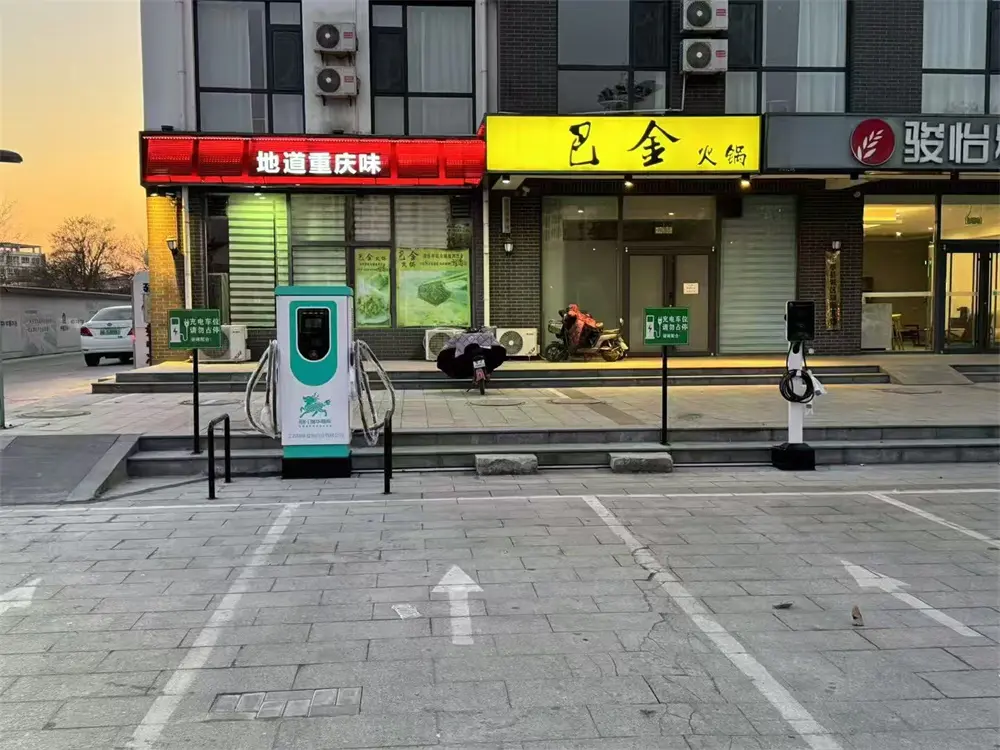What Amps Are Needed to Charge an Electric Car?
The current requirements of an electric vehicle charger depend on its level of charge.Level 1 chargers utilize a 120-volt power source and typically output 12 to 16 amps, which is a slower charge but is suitable for everyday short-range needs.Level 2 chargers, on the other hand, rely on 240-volt power sources and deliver 16 to 40 amps, with some units reaching 80 amps, which greatly increases charging efficiency. Public charging stations, especially DC fast-charging stations, can deliver 100 to 350 amps, providing a quick top-up for long-distance drivers.
How Do They Impact Electric Car Charging?
The amperage of an electric vehicle (EV) charger has a significant impact on the charging process, determining how quickly and efficiently current flows to the battery. Here is a detailed explanation of how it affects EV charging:
- Charging Speed: The higher the amperage of the charger, the more power will be transferred to the EV battery per hour. This means that using a charger with higher amperage can charge the battery more quickly than a low amperage charger.
- Charging efficiency: High-amp chargers improve charging efficiency, meaning more power can be charged in the same amount of plug-in time, reducing charging time, which can reduce the amount of time users have to wait for charging, improve the efficiency of the charging process, and increase the convenience of use.
- Vehicle compatibility: Modern electric vehicles typically support higher charging amperage inputs; while some older electric vehicles may not be able to support high amperage charging, therefore, the maximum charging rate capability of the vehicle needs to be considered when selecting a charger to ensure compatibility between the charger and the vehicle. Avoid inefficient charging or damage to the vehicle’s battery.
- Energy management: Higher amperage requires a more robust electrical infrastructure. Both public charging stations and home charging facilities need to have adequate power supplies to support high-current charging. This may involve grid upgrades or home electrical system modifications to ensure that high-current charging is supported safely and efficiently.
The amount of power flowing through an EV charger is a key factor in the speed, efficiency and user convenience of EV charging. Selecting the right charger requires a combination of the vehicle’s maximum charging capacity, the compatibility of charging facilities, and the ability of the electrical infrastructure to support it. Through rational configuration, charging efficiency can be maximized, charging time can be reduced, and the convenience of using electric vehicles can be improved.

How Many Amps Does a Home EV Charger Use?
A home EV charger can use anywhere from 12 amps (for Level 1) to up to 80 amps (for some Level 2 chargers). The specific amperage will depend on the charger’s specifications and the electrical setup in the home.
Level 1 Charging:
- Uses a standard 120-volt outlet.
- Typically provides 12 to 16 amps.
- This is the most basic level of home charging and is often used for overnight charging.
Level 2 Charging:
- Requires a 240-volt outlet, which is similar to what some large appliances use.
- The amperage can range from 16 to 40 amps, with some chargers capable of delivering up to 80 amps.
- Level 2 chargers are faster than Level 1 and are the most common type of home EV charger for daily use.
Because of their faster charging capabilities, Level 2 chargers are recommended for EV owners who require faster charge turnaround times and are often considered a necessary investment for regular EV use.
How much current does a public charging station draw?
Electric Vehicle (EV) public charging stations offer a variety of current outputs to meet different charging speeds and vehicle requirements. These are typically categorized as Level 2 and Level 3 (DC fast charging) stations:
Level 2 stations:
Level 2 stations typically operate at 240 volts. They provide roughly 16 to 40 amps, but some may provide up to 80 amps. At these amperage levels, Level 2 chargers can provide a range of approximately 12 to 60 miles per hour of charging, depending on the vehicle’s ability to accept the current provided.
Level 3 (DC fast charging) stations:
Level 3 DC fast chargers operate at much higher voltages, usually between 400 and 800 volts or higher. These chargers can typically deliver from 100 amps to 350 amps or higher, allowing them to deliver more power. Because of the high current and voltage, DC fast chargers can add up to 100 miles of range in as little as 10 to 30 minutes, making them ideal for quick charging on long trips.
Public chargers, especially DC fast chargers, are designed to accommodate a wide range of electric vehicles, including those with high-capacity batteries and advanced charging features. The high current output of these charging stations allows them to meet the needs of drivers who require fast charging, with significantly shorter charging times compared to home chargers.
Which Amp Rating is Right for Your Home Electric Vehicle Charger?
When selecting the amp rating for your home electric vehicle (EV) charger, there are several factors to consider to ensure you’re choosing the best option for both your vehicle and electrical system. Here’s a guide to help you make an informed decision:
Vehicle Compatibility:
Ensure that the charger’s amp rating is compatible with your EV’s onboard charger. Most modern EVs can handle at least 32 amps, but it’s always best to check your vehicle’s manual or consult with the manufacturer.
Daily Driving Needs:
If your daily driving is minimal, a lower amp charger might be sufficient. However, if you have a longer commute or need to charge more frequently, a higher amp charger will reduce the time you spend charging.
Electrical System Capacity:
Assess your home’s electrical system to ensure it can handle the charger’s load. A higher amp charger may require a 240-volt outlet and a dedicated circuit to avoid overloading your home’s electrical system.
Charging Speed:
As you mentioned, higher amp chargers offer faster charging speeds. For instance, a 32-amp charger can provide about 25 miles of range per hour, while a 40-amp charger can offer around 30 miles per hour. This can be crucial if you need a quick top-up or if you have limited time for charging.
Cost and Convenience:
Consider the cost of installation and the potential convenience of having a faster charger. While a higher amp charger may be more expensive upfront, it can save time and provide more flexibility in your charging routine.

Factors to Keep in Mind When Installing High-Amp Chargers
When installing a high-amp electric vehicle (EV) charger at home, consider these five crucial points for a safe and efficient setup:
- Circuit Breaker: Install a dedicated circuit breaker suited to the charger’s amperage to prevent system overload and ensure safety.
- Electrical Capacity: Ensure your home’s electrical system, including the main panel, can handle the additional load of a high-amp charger, typically requiring a 240-volt outlet and a dedicated circuit.
- Permits and Regulations: Check with local authorities for any required permits and ensure your installation adheres to local building and electrical codes.
- Professional Installation: Due to the complexity and safety implications, it’s advisable to hire a qualified electrician for the installation to comply with local building codes and ensure optimal operation.
These steps will help guarantee that your high-amp charger is not only compliant with safety standards but also ready to meet future charging demands.
Conclusion
When selecting a charger, it’s essential to match the vehicle’s maximum charging capacity with the charger’s amperage. Additionally, ensure your home’s electrical infrastructure can support the higher amperage required for faster chargers. For safety and efficiency, professional installation is always recommended to ensure everything is up to code and optimized for your needs.
